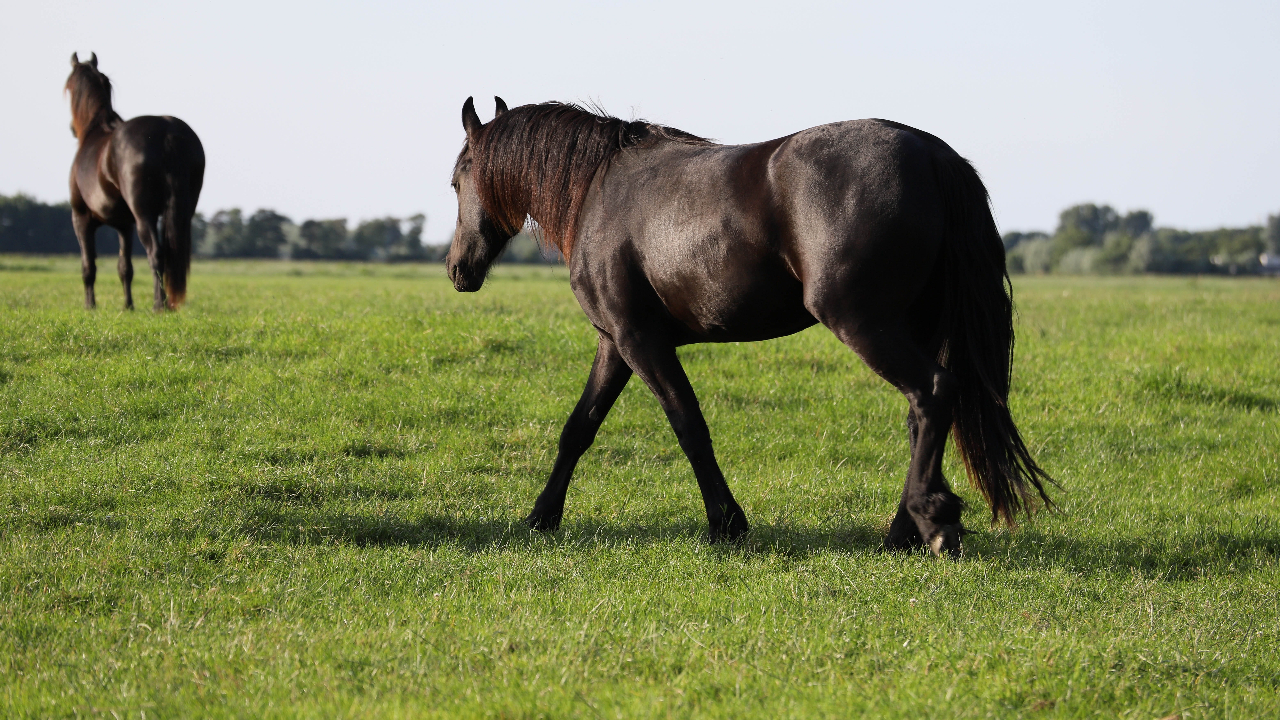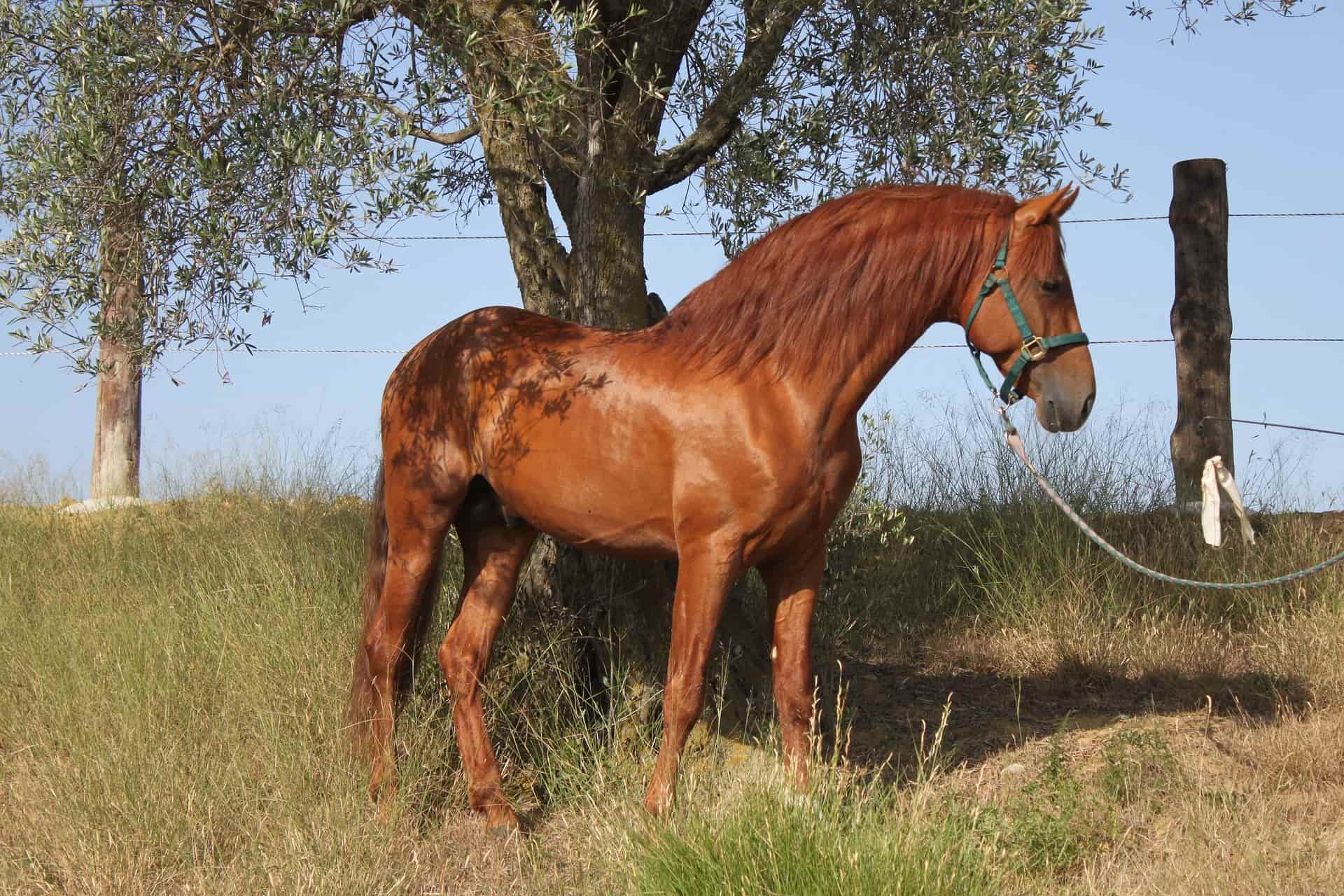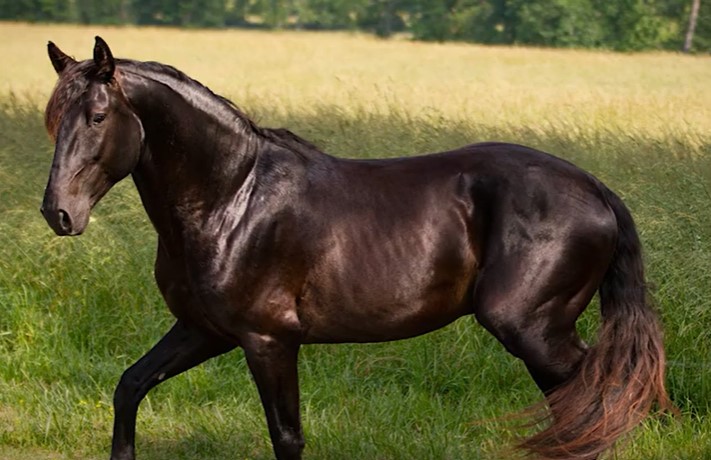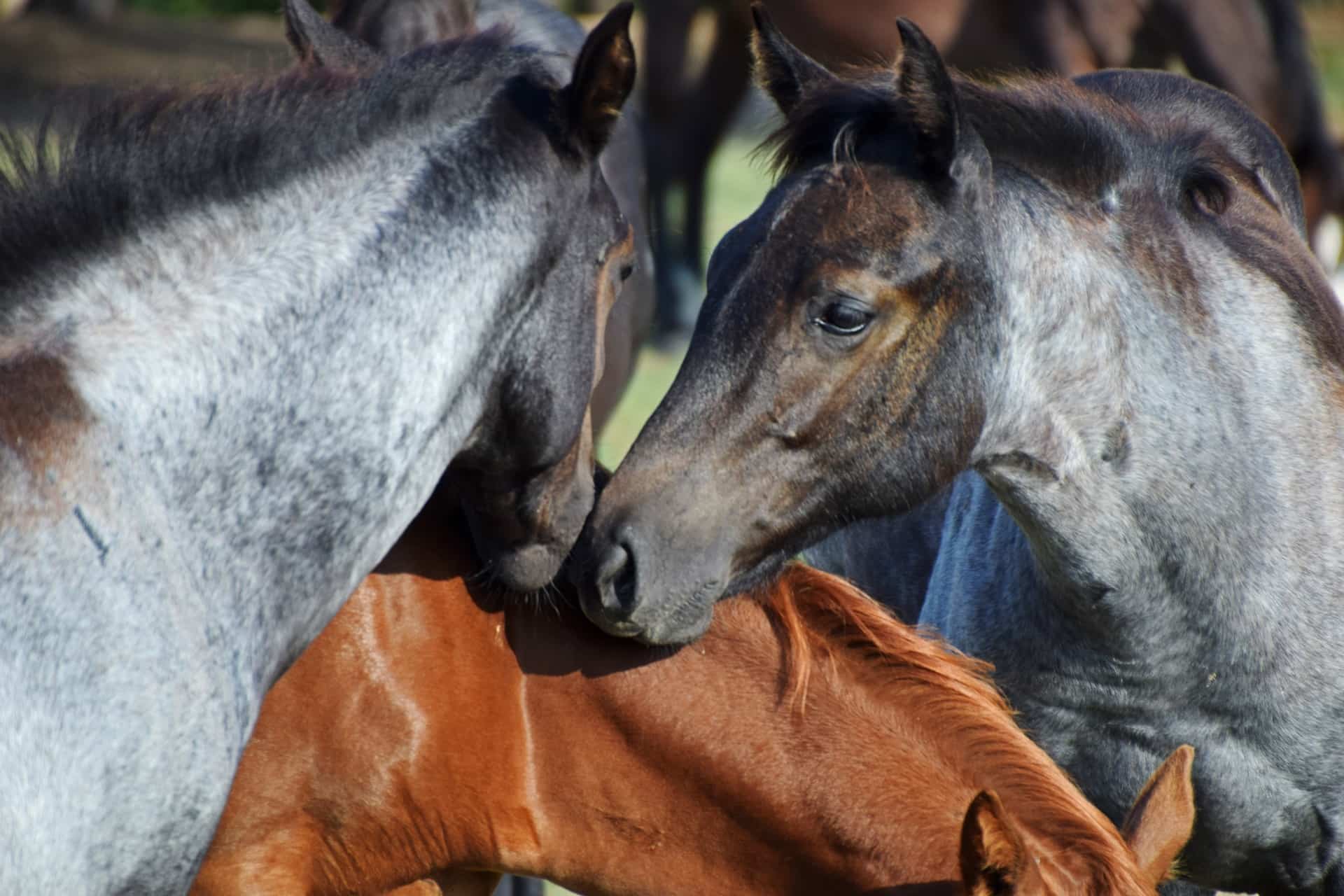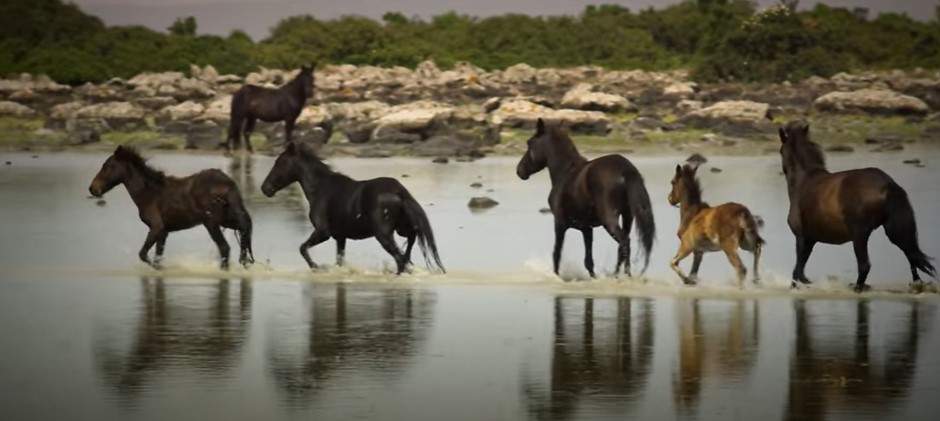There are over 300 different horse breeds in the world today. But some of these are more distinctive than others. And one of the most distinctive ones is the Friesian horse which stands out for its elegance and striking beauty. And this horse isn’t just good looking, it’s incredibly versatile too. So if you want to know more about this fascinating breed, take a look at our 13 interesting facts about Friesian horses below.
What’s a Friesian Horse?
The Friesian horse is from Friesland which is a northern province in the Netherlands. They're tall creatures, on average, they measure between 15.3 hands and 17 hands.
The Friesian horse is very hairy, they’re known for their long black, silk mane and tail and traditionally, they have feathers.
And one of the most distinctive things about the Friesian horse is it's pure black coat. Overall, these equines have the height and the frame of a draft horse, yet they’re elegant, athletic and agile with a calm temperament.
13 Friesian Horse Facts
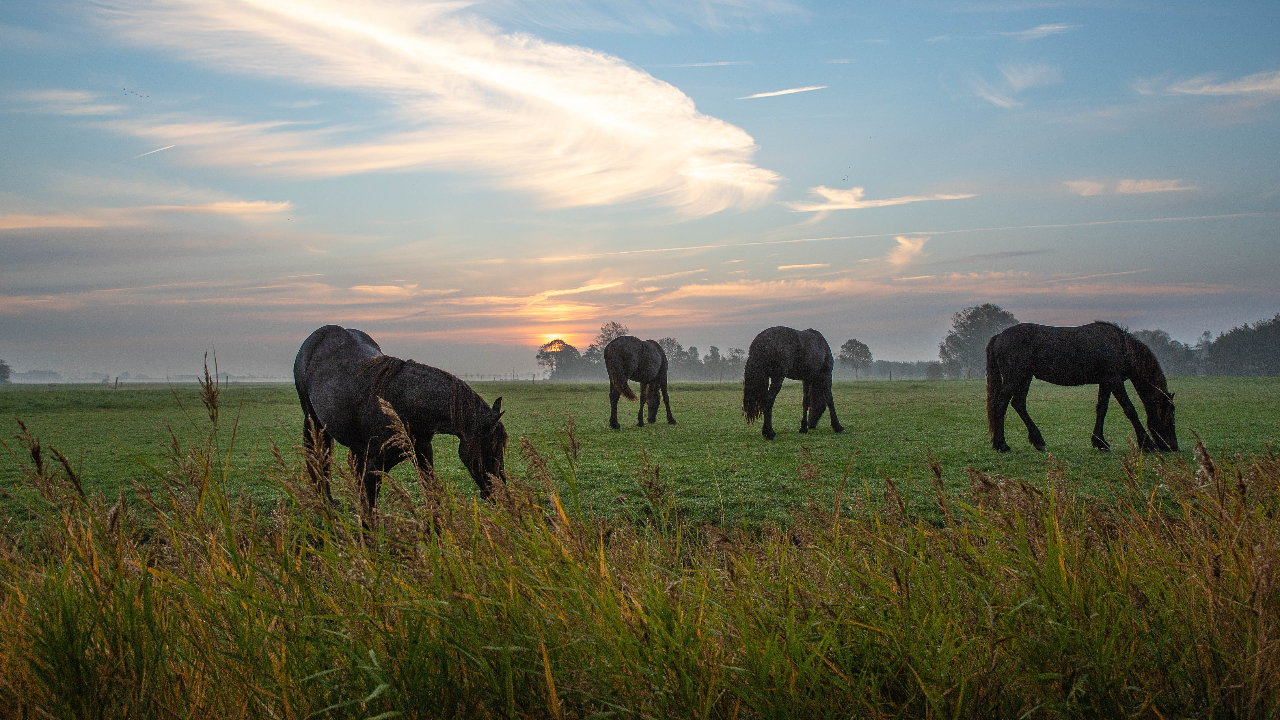
The Friesian horse is very versatile so this means they’ve had a big impact on the Equine world. And if you want to know more about the breed, take a look at these 13 Friesian horse facts below.
1. Not All Friesians Have Black Coats
One of the things that define a Friesian horse is its shiny, jet black coat. It's among the most beautiful black horse breeds in the world. However, not all Friesians have black coats, sometimes you can find chestnut Friesians. And these horses are named Fire Friesians.
You can't register chestnut Friesians as standard breeding stallions. Instead, chestnut Friesian stallions must be registered in a special Fire Friesian studbook.
If chestnut mares and geldings have exceptional conformation, they can be registered as standard Friesians. Fire Friesians are very rare and there are currently only three official Fire Friesian stallions in the world. And these stand at stud in the Netherlands.
2. The Friesian Horse Faced Extinction
The Friesian horse, along with many other draft type horses, almost became extinct in the early 20th century. This was due to the rise in modern farming machinery, which slowly made them redundant.
As well as this, in the Netherlands, Friesians were bred with other draft types to produce Bovenlanders. This meant that their stud books and bloodlines were mixed with other heavy horse breeds (see our mixed breed horses guide). So in 1913, there were only three official breeding stallions left in the Netherlands.
But during World War Two, the Friesian breed was in demand again because they make such good war mounts. And eventually, breeding became more regulated and today in Holland there’s a healthy population of Friesians. They account for around 7 percent of their equine population.
3. Friesians Are a Rare Breed
Even though there’s a strong horse population of Friesians in the Netherlands, overall, they’re considered to be a rare breed. Especially here in the USA where there are only 8,000 currently registered.
And there are only 12,000 registered in the "Friesch Paarden Stamboek", the official Friesian studbook in the Netherlands. This is also known as the KFPS.
4. Strict Breed Standards
Because the Friesian breed almost became extinct, worldwide Friesian associations have incredibly strict standards when it comes to registering Friesian horses. This is to protect them from becoming almost extinct again and to keep the breed pure.
This means that foals are registered in different grades of stud books depending on their bloodline and overall body confirmation. And a member of a local Friesian society will come out to grade the foal.
Not all Friesians are accepted as breeding stock. And very few Friesian stallions make it into the primary stud book.
Before they’re registered, foals must also be DNA tested. The test shows up any genetic diseases and illnesses and it also checks for the presence of the chestnut gene.
Friesians must be true black. They aren’t allowed to have any white markings, except for one small star on the forehead (hence why it made our black and white horse breeds list). And Friesian mares and gelding must be a minimum of 15.2 hands to be registered.
5. The Friesian Horse is Susceptible to Certain Illnesses
Friesians have been subject to strict breeding standards since 1879. So this means they have a pretty small gene pool. And just like with all pedigree animals, they’re more susceptible to genetic disorders and diseases, particularly on their skin.
Overall, Friesians may have a weaker immune system and they also have a higher risk of skin conditions, especially under their feathers. It also makes their skin more susceptible to things such as bites, allergies and rain rot.
They are susceptible to dwarfism as well as several other genetic diseases such as PSSM, Hydrocephalus, aortic rupture and an enlarged esophagus.
And up to 54 percent of mares retain their placenta. Many Friesians suffer from Anhidrosis too, which means that they don’t sweat properly.
6. It’s an Ancient Breed
This horse breed has been around for a very long time and is considered to be an ancient breed. Evidence of their existence date back to at least the 15th and 16th century but they are probably even older than this. Potentially they go as far back as Roman times.
At some point in history, it’s believed that the Friesian had Andalucian and Arabian blood introduced to its line. This is why Friesians have a good knee action, associated with horses from the Andalusian province of Spain. And it’s arched neck, elegance and agility comes from its Arabian heritage.
Also Read: 20 Fun Facts About the Arabian Horse
Friesians were one of the most popular horses in medieval Europe. They were prized war animals and were often used as the mounts of knights in battle and royalty due to their striking appearance, size, strength and grace.
King Louis ii of Hungary was famous for winning a great battle against the Turks while he was riding a Friesian horse.
7. Lots Of Breeds Came From The Friesian
The Friesian horse has been around for so long, it's thought to have influenced many different horse breeds from around Europe. Our very own horse from the USA, the Morgan horse, is thought to have Friesian heritage.
Over in the British isles, the Hackney, Shire, Fell and Dales are all thought to be related to Friesians. The Dole Gudbrandsdals from Norway and Oldernburger German horse breed may have come from Friesians too.
And in the province of the French Pyrenees, there's the Ariege dit de Merenes pony, which has a strong Friesian resemblance.
Suggested Reading: 14 Most Stunning French Horse Breeds
8. Friesians are Versatile
One of the things that makes this breed from Friesland so popular is that they perform well in most riding events and disciplines both in and out of the show ring.
In fact, the only thing Friesian horses aren’t good at is jumping. They just don’t have the right body shape. But despite this, they’re one of the most versatile equines around.
They make great trail horses due to their hard feet and sturdy attitude. Even though they’re not officially “gaited” horse breeds they are fantastic trotters and often used in trotting racing in the Netherlands.
Friesians are popular dressage horse breeds too due to their elegance, stamina and agility. And of course, they’re perfect for the cart and carriage due to their calm nature and power.
9. There are Two Types of Friesian Horse
There are two different types of Friesians and these are known as Baroque and Sports. Baroque Friesians are the classic types with a thick mane and tail, feathers and high leg action. They're the typical carriage horse body type Friesians with short limbs. And they look more rectangular from the side.
Sports Friesians are known as the modern Friesian because they're a more recent variation of the breed. They have longer legs, without feathers and they look more square from the side. Sports Friesians are mostly used for sports such as dressage. And they’re regularly bred with warmblood breeds.
10. They Were in the USA Before it was the USA
Dutch settlers arrived in colonial times in the first decade of the 1600s. They set up home in New Amsterdam, which we know these days as New York.
In around 1625 the new settlers began to ship their native horses over to help them clear the land and for agricultural work. These horses were known as Dutch Trotters when English settlers took over New York in 1664.
Over time, Friesians bred with all kinds of local horses and contributed genetically to the Morgan horse.
But due to this random breeding, for many years, Friesians were obsolete in the USA. Then in 1974, they were reintroduced into North America. And by 1983 they had their own association and national shows.
Related: Nokota Horse Breed
11. Friesians are Hardy
Friesians are so elegant looking, you may think that they’re a pretty difficult horse to keep. But actually, they’re pretty hardy overall.
This is one of the reasons that they were a favorite choice as coach horses. They can get by on little food and therefore they produce less horse poop on the streets.
On top of this, these horses from Friesland are renowned for having hard feet. And they can easily winter outside as long as they have extra food rations and a blanket.
12. They’re Always in the Movies
It’s no surprise that Friesians are one of the most popular breeds in movies. They look even more stunning on the big screen so they're often cast in Hollywood movies.
Some of the most famous movies that feature Friesians include Mask of Zorro, The Chronicles of Narnia, 300, Sense and Sensibility. And the popular TV series, Game of Thrones.
The most beautiful horse in the world is a Friesian stallion called Fredrik the great. He was born in the Netherlands and imported to the USA at six years old.
He has a mane and tail to die for, a glistening jet black coat and he moves like a true movie star. And when he's not showing off for the cameras, he and his owner like to practice dressage.
13. They Have Their Own Carriage
One of the Friesians most popular occupations over the years has been as coach horse. Over in the UK, Friesian horses have been used to pull funeral carts since the 1800s.
And Friesians have their very own type of carriage known as the Friesian Sjees. This is a unique two-wheeled cart where the driver sits on the left. And it’s usually drawn by one or two horses. But in some special parades, there can be a string of ten horses on one carriage.
Friesian Horse Breed - Frequently Asked Questions
What are Friesian horses known for?
Friesian horses are were originally used as agricultural horses, however, due to their strength and agility, they were quickly adopted as war horses for battle. And they were the choice breed for nobility.
Friesians are also famous for trotting racing. And of course, they’re an iconic horse when it comes to carriage driving too. Overall, it’s pretty hard to put a Friesian into a single category because they’re so versatile.
Are Friesians easy keepers?
Apart from potential skin conditions, generally, Friesians are easy keepers. This is one of the reasons they were used a lot as transport horses in the city. They could get by on less food, thus producing less manure on the streets.
They’re not as hardy as heavy draft breeds so you should always increase their rations in the winter and put a blanket on them in cold climates.
What is a Friesian horse's personality like?
Friesian horses are typical gentle giants with a calm temperament. They’re friendly, curious and patient and enjoy being around people and other animals.
They’re quick learners and eager to please which makes them easy to train and handle. Overall, Friesians are pretty easy-going, however, they’re highly intelligent and pretty sensitive. So sometimes they can be prone to anxiety.
How long do Friesian horses live?
Overall, Friesian horses have a shorter life span than the average horse. This could be due to their small gene pool that comes with the strict breeding regulations associated with the breed.
On average, a horse will live between 25 and 20 years. But Friesians have a life expectancy of between 15 and 17 years.
That said, some Friesian horses can live longer than this. The oldest Friesian horse is called Drieske Star and he's 34 years old. So it all depends on the horse, its environment and its genetic disposition.
Conclusion
As you can see from these interesting facts about Friesian horses, they truly are a magnificent horse breed. Not only are they stunning to look at, but these horses are also kind and cooperative with a good temperament. But due to strict breeding standards, true Friesian's are expensive horses and hard to come by. But if you're looking for a hardy, dependable and stunning horse, Friesian is the breed you should choose.
